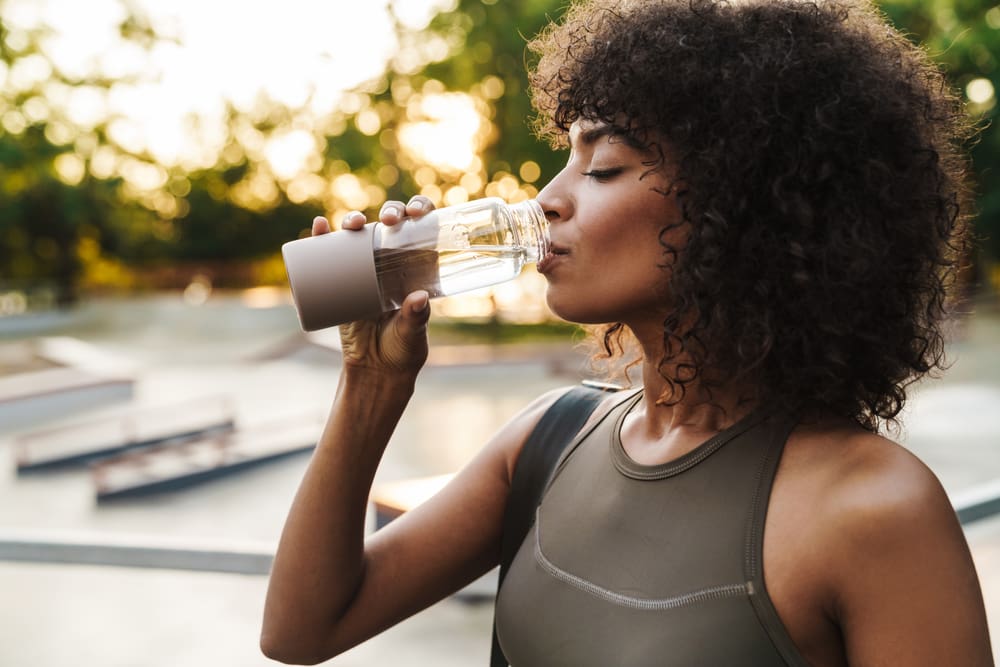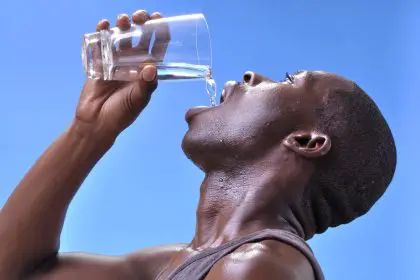Water serves as the foundation of human health, comprising approximately 60% of adult body weight and playing essential roles in virtually every bodily function. From regulating body temperature and transporting nutrients to cushioning joints and eliminating waste products, adequate hydration remains crucial for optimal physical and mental performance throughout life.
The question of how much water to drink daily has generated considerable confusion due to varying recommendations and individual differences in hydration needs. While the popular “eight glasses a day” rule provides a simple guideline, actual fluid requirements depend on numerous factors including body size, activity level, climate, overall health status, and individual metabolism.
Understanding your personal hydration needs empowers you to maintain optimal fluid balance while avoiding both dehydration and overhydration. This comprehensive approach to daily water intake considers the complex interplay of factors that influence fluid requirements and provides practical strategies for meeting your body’s hydration needs effectively.
Individual factors that determine your water needs
Body size represents the most fundamental factor influencing daily water requirements, as larger individuals have more body mass that requires hydration and higher metabolic rates that increase fluid turnover. Weight-based calculations provide a more personalized starting point than universal recommendations for determining baseline fluid needs.
A general guideline suggests consuming approximately half to one ounce of water per pound of body weight daily under normal conditions. This means a 150-pound person would need roughly 75 to 150 ounces of water daily, with the higher end appropriate for more active individuals or those in warm climates.
Age significantly impacts hydration needs and the body’s ability to regulate fluid balance effectively. Older adults have reduced kidney function, decreased thirst sensation, and lower total body water content, making them more susceptible to dehydration and requiring more conscious attention to fluid intake.
Gender differences also influence water requirements, with men typically needing more fluids than women due to larger average body size and higher muscle mass. However, women have increased needs during pregnancy and breastfeeding due to additional physiological demands and fluid losses.
Metabolism varies significantly between individuals, affecting how quickly the body processes and eliminates fluids. People with faster metabolisms generally require more water to support increased cellular activity and waste elimination processes.
Activity level and exercise considerations
Physical activity dramatically increases fluid requirements through sweat production, increased breathing rate, and elevated metabolic demands. The intensity, duration, and type of exercise all influence how much additional water your body needs beyond baseline requirements.
Moderate exercise lasting less than an hour typically requires an additional 12 to 16 ounces of water to replace fluid losses. This amount should be consumed before, during, and after exercise to maintain optimal hydration status and support performance.
Intense or prolonged exercise sessions can result in fluid losses exceeding two to three liters per hour through sweating. These substantial losses require aggressive fluid replacement strategies that may include electrolyte replacement in addition to water consumption.
Pre-exercise hydration preparation involves consuming 16 to 20 ounces of water two to four hours before activity, followed by another 8 ounces 15 to 30 minutes before beginning exercise. This preparation ensures optimal hydration status at the start of physical activity.
During exercise, aim to consume 6 to 8 ounces of fluid every 15 to 20 minutes to maintain hydration levels. This rate may need adjustment based on individual sweat rates, exercise intensity, and environmental conditions.
Post-exercise rehydration should replace 150% of fluid losses, meaning if you lose one pound during exercise, you should consume approximately 24 ounces of fluid to fully restore hydration status. This overcompensation accounts for continued fluid losses through urine production and ongoing sweating.
Environmental factors affecting hydration needs
Climate conditions significantly impact daily water requirements through their effects on body temperature regulation and fluid losses. Hot, humid environments increase sweating rates and respiratory water losses, substantially elevating fluid needs beyond baseline requirements.
High altitude environments above 8,000 feet increase fluid requirements due to increased respiratory rate, lower humidity levels, and enhanced kidney function. These physiological adaptations can increase daily water needs by 1.5 to 2 liters beyond sea level requirements.
Air conditioning and heating systems create dry indoor environments that increase respiratory water losses and can contribute to dehydration over time. People spending significant time in climate-controlled environments may need additional fluids to compensate for these losses.
Air travel presents unique hydration challenges due to low cabin humidity, pressurized environments, and limited access to fluids. Airplane travel can increase dehydration risk, making conscious fluid intake important during and after flights.
Seasonal variations affect hydration needs, with winter heating systems and summer heat both creating conditions that increase fluid requirements. Being aware of these seasonal changes helps maintain optimal hydration year-round.
Health conditions and medications that influence water needs
Certain medical conditions significantly alter fluid requirements and the body’s ability to maintain proper hydration status. Understanding these conditions helps individuals adjust their water intake appropriately while working with healthcare providers to manage hydration needs.
Fever increases fluid requirements substantially, with each degree of temperature elevation above normal requiring approximately 7 ounces of additional fluid daily. This increased need results from elevated metabolic rate and increased respiratory and skin losses.
Kidney disease can affect the body’s ability to concentrate urine and regulate fluid balance, potentially requiring modified fluid intake recommendations. Individuals with kidney conditions should work closely with healthcare providers to determine appropriate hydration strategies.
Diabetes can increase fluid losses through increased urination, particularly when blood sugar levels are poorly controlled. People with diabetes may need higher fluid intake to compensate for these losses while managing their condition effectively.
Heart conditions may require fluid restrictions in some cases, making it essential for individuals with cardiovascular disease to follow medical recommendations regarding daily fluid intake rather than general guidelines.
Certain medications affect fluid balance and hydration needs. Diuretics increase fluid losses and may require increased water intake, while some medications can impair thirst sensation or kidney function, affecting hydration status.
Signs of proper hydration versus dehydration
Monitoring hydration status helps ensure adequate fluid intake while avoiding overhydration. Several reliable indicators can help assess whether your current water consumption meets your body’s needs effectively.
Urine color provides the most practical and reliable indicator of hydration status for most people. Pale yellow urine typically indicates adequate hydration, while dark yellow or amber-colored urine suggests dehydration requiring increased fluid intake.
Urine frequency offers another useful hydration indicator, with well-hydrated individuals typically urinating every two to four hours during waking hours. Infrequent urination may indicate inadequate fluid intake, while excessive urination could suggest overhydration.
Thirst sensation serves as a late indicator of dehydration, meaning you’re already mildly dehydrated by the time you feel thirsty. Relying solely on thirst to guide fluid intake often results in chronic mild dehydration.
Skin elasticity can indicate hydration status through the pinch test. Well-hydrated skin springs back immediately when pinched, while dehydrated skin returns slowly to its normal position.
Energy levels and mental clarity often reflect hydration status, with even mild dehydration causing fatigue, difficulty concentrating, and mood changes. Maintaining adequate hydration supports optimal cognitive and physical performance.
Timing and distribution of daily water intake
The timing of water consumption throughout the day affects absorption, utilization, and overall hydration effectiveness. Strategic distribution of fluid intake optimizes hydration while minimizing disruption to daily activities and sleep patterns.
Morning hydration helps replace fluids lost during sleep and prepares the body for daily activities. Consuming 16 to 20 ounces of water upon waking helps restore hydration status and supports metabolic function throughout the morning.
Spreading water intake evenly throughout the day promotes better absorption and utilization than consuming large amounts at once. The body can only absorb approximately 8 ounces of water every 15 to 20 minutes, making frequent smaller amounts more effective.
Pre-meal hydration can support digestion while contributing to overall fluid intake. Consuming water 30 minutes before meals helps prepare the digestive system without diluting digestive enzymes during eating.
Evening fluid intake should be balanced to maintain hydration while minimizing sleep disruption from nighttime urination. Tapering fluid consumption in the hours before bedtime can help maintain sleep quality while supporting overnight hydration.
Avoiding excessive fluid consumption immediately before sleep helps prevent sleep interruption while ensuring adequate hydration for overnight recovery processes. Finding the right balance requires individual adjustment based on personal patterns and needs.
Sources of daily fluid intake beyond plain water
Total daily fluid intake includes water from all sources, not just plain drinking water. Food, other beverages, and metabolic water production all contribute to meeting daily hydration requirements.
Food provides approximately 20% of daily fluid intake for most people, with fruits and vegetables contributing the highest water content. Watermelon, cucumber, lettuce, and other high-water foods can significantly contribute to hydration goals.
Other beverages including herbal teas, milk, and even caffeinated drinks contribute to fluid intake, though some may have mild diuretic effects that slightly reduce their hydration contribution. The net fluid gain from most beverages remains positive despite these effects.
Soups, broths, and other liquid-based foods provide substantial fluid intake while offering nutritional benefits. These foods can be particularly valuable for individuals who struggle to consume adequate plain water.
Metabolic water production occurs during cellular energy production, contributing approximately 10% of daily fluid needs. This internal water production varies based on metabolic rate and dietary composition.
The key to optimal hydration lies in understanding your individual needs and developing sustainable habits that ensure adequate fluid intake throughout the day. Rather than adhering rigidly to universal recommendations, pay attention to your body’s signals and adjust intake based on activity level, environmental conditions, and individual responses.
Start with baseline recommendations based on body weight and activity level, then modify based on environmental conditions, health status, and personal experience. Monitor hydration indicators like urine color and energy levels to assess whether your current intake meets your body’s needs.
Remember that hydration needs change daily based on various factors, making flexibility and awareness more important than strict adherence to specific amounts. The goal is maintaining optimal fluid balance that supports health, performance, and well-being throughout all of life’s activities and challenges.
Developing good hydration habits takes time and attention, but the benefits to health, energy, and overall well-being make this effort worthwhile. By understanding and meeting your personal hydration needs, you provide your body with the foundation it needs for optimal function and vitality.















